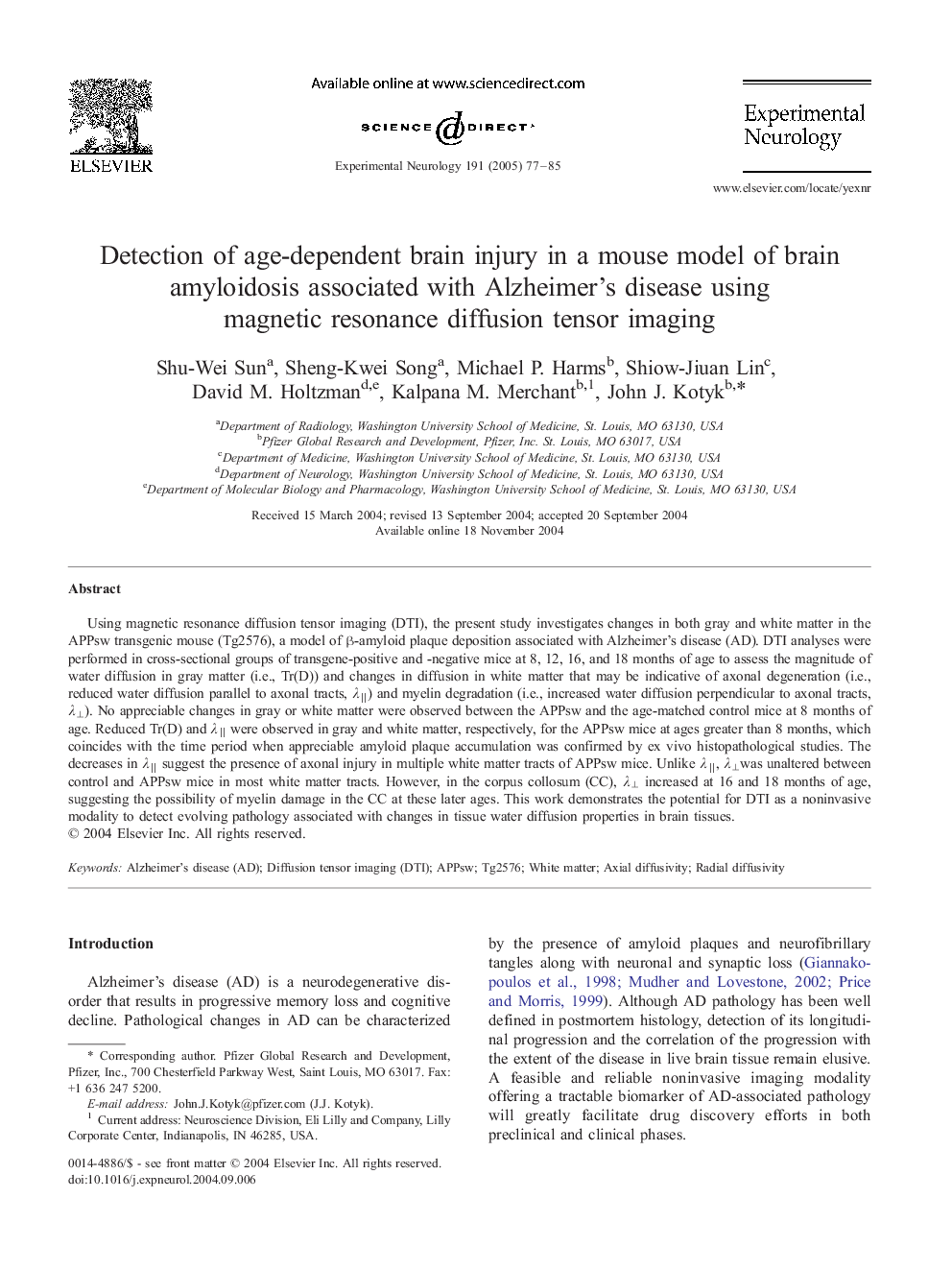| Article ID | Journal | Published Year | Pages | File Type |
|---|---|---|---|---|
| 9192135 | Experimental Neurology | 2005 | 9 Pages |
Abstract
Using magnetic resonance diffusion tensor imaging (DTI), the present study investigates changes in both gray and white matter in the APPsw transgenic mouse (Tg2576), a model of β-amyloid plaque deposition associated with Alzheimer's disease (AD). DTI analyses were performed in cross-sectional groups of transgene-positive and -negative mice at 8, 12, 16, and 18 months of age to assess the magnitude of water diffusion in gray matter (i.e., Tr(D)) and changes in diffusion in white matter that may be indicative of axonal degeneration (i.e., reduced water diffusion parallel to axonal tracts, λâ) and myelin degradation (i.e., increased water diffusion perpendicular to axonal tracts, λâ¥). No appreciable changes in gray or white matter were observed between the APPsw and the age-matched control mice at 8 months of age. Reduced Tr(D) and λâ were observed in gray and white matter, respectively, for the APPsw mice at ages greater than 8 months, which coincides with the time period when appreciable amyloid plaque accumulation was confirmed by ex vivo histopathological studies. The decreases in λâ suggest the presence of axonal injury in multiple white matter tracts of APPsw mice. Unlike λâ, λâ¥was unaltered between control and APPsw mice in most white matter tracts. However, in the corpus collosum (CC), λ⥠increased at 16 and 18 months of age, suggesting the possibility of myelin damage in the CC at these later ages. This work demonstrates the potential for DTI as a noninvasive modality to detect evolving pathology associated with changes in tissue water diffusion properties in brain tissues.
Keywords
Related Topics
Life Sciences
Neuroscience
Neurology
Authors
Shu-Wei Sun, Sheng-Kwei Song, Michael P. Harms, Shiow-Jiuan Lin, David M. Holtzman, Kalpana M. Merchant, John J. Kotyk,
